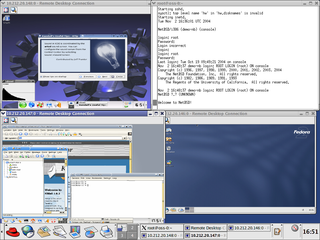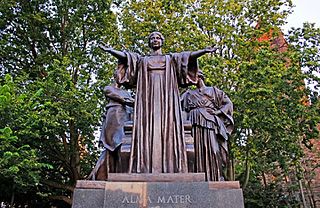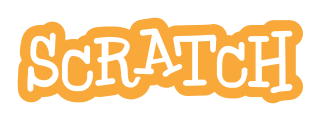
Qt is free and open-source cross-platform software for creating graphical user interfaces as well as cross-platform applications that run on various software and hardware platforms such as Linux, Windows, macOS, Android or embedded systems with little or no change in the underlying codebase while still being a native application with native capabilities and speed.

Xen is a free and open-source type-1 hypervisor, providing services that allow multiple computer operating systems to execute on the same computer hardware concurrently. It was originally developed by the University of Cambridge Computer Laboratory and is now being developed by the Linux Foundation with support from Intel, Citrix, Arm Ltd, Huawei, AWS, Alibaba Cloud, AMD, Bitdefender and epam.
Architecture for Humanity was a US-based charitable organization that sought architectural solutions to humanitarian crises and brought professional design services to clients. Founded in 1999, it laid off its staff and closed down at the beginning of January 2015.

The open-design movement involves the development of physical products, machines and systems through use of publicly shared design information. This includes the making of both free and open-source software (FOSS) as well as open-source hardware. The process is generally facilitated by the Internet and often performed without monetary compensation. The goals and philosophy of the movement are identical to that of the open-source movement, but are implemented for the development of physical products rather than software. Open design is a form of co-creation, where the final product is designed by the users, rather than an external stakeholder such as a private company.
Technical variations of Linux distributions include support for different hardware devices and systems or software package configurations. Organizational differences may be motivated by historical reasons. Other criteria include security, including how quickly security upgrades are available; ease of package management; and number of packages available.

Open-source hardware (OSH) consists of physical artifacts of technology designed and offered by the open-design movement. Both free and open-source software (FOSS) and open-source hardware are created by this open-source culture movement and apply a like concept to a variety of components. It is sometimes, thus, referred to as FOSH. The term usually means that information about the hardware is easily discerned so that others can make it – coupling it closely to the maker movement. Hardware design, in addition to the software that drives the hardware, are all released under free/libre terms. The original sharer gains feedback and potentially improvements on the design from the FOSH community. There is now significant evidence that such sharing can drive a high return on investment for the scientific community.

The University of Illinois Urbana-Champaign is an academic research institution that is the flagship campus of the University of Illinois System. Since its founding in 1867, it has resided and expanded between the twin cities of Champaign and Urbana in the State of Illinois. Some portions are in Urbana Township.

Cameron Sinclair is a designer, writer and one of the pioneers in socially responsive architecture. He is founder of the Worldchanging Institute, a research institute focused on innovative solutions to social and humanitarian crises and serves as pro bono designer of Armory of Harmony, a US-based organization focused on smelting down decommissioned weapons into musical instruments. He is a third generation gin maker and is co-founder of Half Kingdom Gin based in Jerome, Arizona.

Scratch is a high-level block-based visual programming language and website aimed primarily at children as an educational tool, with a target audience of ages 8 to 16. Users on the site, called Scratchers, can create projects on the website using a block-like interface. Projects can be exported to standalone HTML5, Android apps, Bundle (macOS) and EXE files using external tools. Scratch was conceived and designed through collaborative National Science Foundation grants awarded to Mitchell Resnick and Yasmin Kafai. The service is developed by the MIT Media Lab, and has been translated into 70+ languages, and is used in most parts of the world. Scratch is taught and used in after-school centers, schools, and colleges, as well as other public knowledge institutions. As of 15 February 2023, community statistics on the language's official website show more than 123 million projects shared by over 103 million users, over 804 million total projects ever created, and more than 95 million monthly website visits.

OpenStack is a free, open standard cloud computing platform. It is mostly deployed as infrastructure-as-a-service (IaaS) in both public and private clouds where virtual servers and other resources are made available to users. The software platform consists of interrelated components that control diverse, multi-vendor hardware pools of processing, storage, and networking resources throughout a data center. Users manage it either through a web-based dashboard, through command-line tools, or through RESTful web services.
LinuxCNC is a free, open-source Linux software system that implements numerical control capability using general purpose computers to control CNC machines. It's mainly intended to run on PC AMD x86-64 systems. Designed by various volunteer developers at linuxcnc.org, it is typically bundled as an ISO file with a modified version of 32-bit Ubuntu Linux which provides the required real-time kernel.
OpenWrt is an open-source project for embedded operating systems based on Linux, primarily used on embedded devices to route network traffic. The main components are Linux, util-linux, musl, and BusyBox. All components have been optimized to be small enough to fit into the limited storage and memory available in home routers.

Open Source Ecology (OSE) is a network of farmers, engineers, architects and supporters, whose main goal is the eventual manufacturing of the Global Village Construction Set (GVCS). As described by Open Source Ecology "the GVCS is an open technological platform that allows for the easy fabrication of the 50 types of industrial machines that it takes to build a small civilization with modern comforts". Groups in Oberlin, Ohio, Pennsylvania, New York and California are developing blueprints, and building prototypes in order to test them on the Factor e Farm in rural Missouri. 3D-Print.com reports that OSE has been experimenting with RepRap 3-D printers, as suggested by academics for sustainable development.
LocalWiki is a collaborative project that aims to collect and open the world's local knowledge. The LocalWiki project was founded by DavisWiki creators Mike Ivanov and Philip Neustrom and is a 501(c)(3) nonprofit organization based in San Francisco, California. LocalWiki is both the name of the project and the software that runs the project's websites.

Opendesk was an initiative to produce furniture on the principles of Open Making, which stopped sharing their design files with the public at least since 2020. Designs were released under Creative Commons licenses. One of Opendesk's goals is to eliminate the cost of shipping completed products in favour of local fabrication.

iDempiere. Community Powered Enterprise, also known as OSGi + ADempiere, is an open source Enterprise Resource Planning (ERP) software that is fully navigable on PCs, tablets and smartphones, it also has customer relationship management (CRM) and supply chain management (SCM) functions. It is in contrast to proprietary or most other open source ERP solutions driven only by a community of supporters.
OpenStructures is an open source modular construction model based on a shared geometrical grid, called the OS grid. It was conceived by designer Thomas Lommée, and first demonstrated at the Z33, a house for contemporary art. According to Lommee, the OpenStructures project explores the possibility of a modular system where "everyone designs for everyone." OpenStructures is developing a database where anyone can share designs which are in turn available for download by the public. Each component design in the OS system will feature previously designed OS parts that were used to create it. In addition, each part will feature component designs that can be made from it.
Open source is source code that is made freely available for possible modification and redistribution. Products include permission to use the source code, design documents, or content of the product. The open-source model is a decentralized software development model that encourages open collaboration. A main principle of open-source software development is peer production, with products such as source code, blueprints, and documentation freely available to the public. The open-source movement in software began as a response to the limitations of proprietary code. The model is used for projects such as in open-source appropriate technology, and open-source drug discovery.













